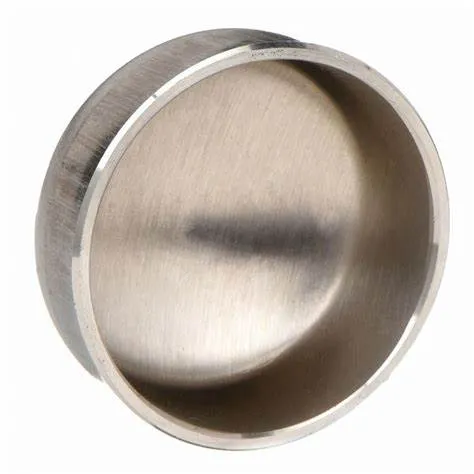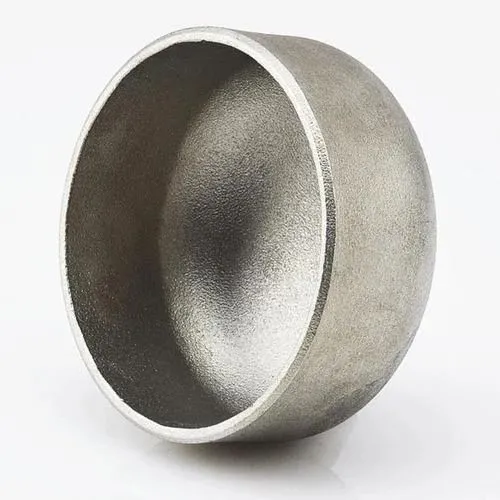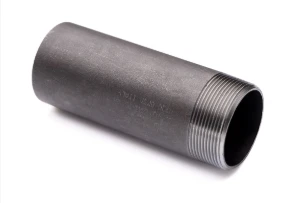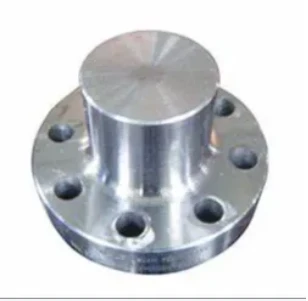I-JIS B2311 iyi-Japanese Industrial Standards ehlanganisa ukufakwa kwamapayipi okushisela izinqe, okuhlanganisa namakepisi asetshenziswa ezinhlelweni zamapayipi. Izigqoko zokushisela izinqe zifeza inhloso yokuvala ukuphela kwepayipi, ukunikeza uphawu lokuvimbela ukuvuza noma ukungcola. Nasi isingeniso se-JIS B2311 butt-welding caps:
- 1. JIS B2311 Standard:
- - Izinga le-JIS B2311 licacisa izidingo zedizayini, ubukhulu, izinto zokwakha, ukukhiqizwa, nokuhlolwa kokufakwa kwe-butt-welding, okuhlanganisa namakepisi, kumasistimu amapayipi.
- - Izinga liqinisekisa ukuthi amakepisi akhiqizwa ngokuhambisana nezindinganiso ze-JIS ahlangabezana nezindinganiso zekhwalithi futhi ahambisana nezinye izingxenye zamapayipi.
- 2. Isigqoko Sokushisela Izinqe:
- - Ikepisi lokushisela izinqe, ngokusho kwe-JIS B2311, liyisilinganisi esiklanyelwe ukumboza futhi sivale isiphetho sepayipi ngokuphephile, esinikeza ukuvikeleka nokugcina ubuqotho besistimu yamapayipi.
- - Ama-Caps asetshenziswa ezimweni lapho ukuphela kwepayipi kudinga ukuvalwa, noma unomphela noma okwesikhashana, ukuvimbela ukuvuza, ukungcola, noma ukunikeza isiphetho ohlelweni.
- 3. Izinto kanye Nokwakha:
- - Izigqoko zokushisela izinqe ngaphansi kokucaciswa kwe-JIS B2311 zitholakala ezintweni ezihlukahlukene njenge-carbon steel, insimbi engagqwali, nensimbi yengxubevange ukuze kuhlangatshezwane nezidingo ezahlukene zohlelo lokusebenza.
- - Lawa makepisi akhiqizwa kusetshenziswa izindlela zokwakha ezijwayelekile ukuze kuqinisekiswe ukuxhumana okuqinile nokungavuzi lapho kushiselwe kuze kube sekugcineni kwepayipi.
- 4. Isicelo Nezinzuzo:
- - Izigqoko zokushisela izinqe zithola izinhlelo zokusebenza ezimbonini ezahlukahlukene, okuhlanganisa uwoyela negesi, izinqubo zamakhemikhali, izindawo zokuhlanza amanzi, nokunye lapho iziphetho zamapayipi zidinga ukuvalwa ngokuvikelekile.
- - Ofeleba banikeza ukuvikeleka emaphethelweni amapayipi ezintweni zemvelo, banqande ukungcoliswa, futhi basize ekugcineni ukuhlanzeka nobuqotho besistimu yamapayipi.
- 5. Ukufakwa kanye Nokushisela:
- - Izinqubo zokufaka ezifanele, ezihlanganisa ukuqondanisa okulungile, ukulungiswa kokuphela kwepayipi, nezindlela zokushisela, zibalulekile lapho kufakwa amakepisi ama-butt-welding ukuze kuqinisekiswe isivalo esiqinile nesingavuzi.
- - I-Welding iyindlela evamile yokunamathisela ama-caps kumapayipi, okuhlinzeka ngokuvala okuvikelekile nokuhlala unomphela okungakwazi ukumelana nokucindezela, ukuhlukahluka kwezinga lokushisa, nokugeleza kwamanzi ngaphakathi kwesistimu.
- Kafushane, izigqoko zokushisela izinqe ze-JIS B2311 ziyizingxenye ezibalulekile ezisetshenziswa ezinhlelweni zamapayipi ukuvala nokuvikela ukuphela kwamapayipi ngokuphepha. Lezi zilinganiso zihambisana nezidingo ezijwayelekile zokuqinisekisa ikhwalithi, ukwethembeka, nokuhambisana ngaphakathi kwezicelo zezimboni lapho ukuvalwa kwamapayipi nokuvikelwa kuyadingeka.
What Is a Butt Welding Cap and How Is It Used in Industrial Piping?
In industrial piping systems, end-of-line sealing and branch closures require robust solutions. A butt welding cap serves as a critical component for terminating pipes securely. By providing a seamless, welded closure, this fitting maintains system integrity, prevents leaks, and supports compliance with industry standards.
What Is a Butt Welding Cap?
A butt welding cap—also called a pipe end cap or buttweld end cap—is a round fitting designed to close off the end of a pipe. It’s manufactured to match the pipe’s outer diameter and schedule, with either a hemispherical or flat face. To install, both the pipe end and cap are beveled to form a V‑groove, enabling full‑penetration, fusion welds. Common materials include carbon steel, stainless steel, nickel alloys, and other engineered grades, chosen to satisfy pressure, temperature, and corrosion‑resistance requirements.
How Is Butt Welding Cap Used in Industrial Piping?
Butt welding caps find application across oil & gas, petrochemical, power generation, water treatment, and general process industries for both permanent and temporary closures. During hydrostatic testing, technicians install caps to seal off sections of piping while monitoring for leaks. In new construction or retrofit projects, caps terminate branch lines, future tie‑in spools, or dead‑end mains until system expansion. Welders prepare each joint by cleaning and beveling surfaces, aligning the cap precisely, and executing a root pass followed by filler passes per the qualified Welding Procedure Specification (WPS). Post‑weld heat treatment and non‑destructive examination (NDE)—such as radiography or ultrasonic testing—verify weld integrity and compliance with ASME B16.9 and related standards. Additionally, temporary caps enable safe isolation during maintenance, allowing for segment testing and dewatering under regulatory protocols.
Benefits and Best Practices
Butt welding caps offer a smooth‑bore transition that minimizes flow disruption and stress concentration. Their full‑penetration welds deliver exceptional structural strength and leak resistance. To optimize performance, engineers should:
Select caps with matching material grades and wall thicknesses
Adhere to proper bevel angles and joint fit‑up tolerances
Follow qualified WPS protocols rigorously
Consider cladding or protective coatings in corrosive environments to extend service life
Regular inspection and thorough documentation ensure long‑term reliability and safe operation under demanding conditions.
Butt welding caps are indispensable components for achieving durable, leak‑proof pipe terminations in a wide range of industrial applications.
Butt Welding Cap FAQs
What is a butt welding cap?
|
What materials are commonly used?
|
What standards govern butt welding caps?
|
How are butt welding caps installed?
|
Where are butt welding caps typically used?
|
What are the advantages of threaded caps?
|
















